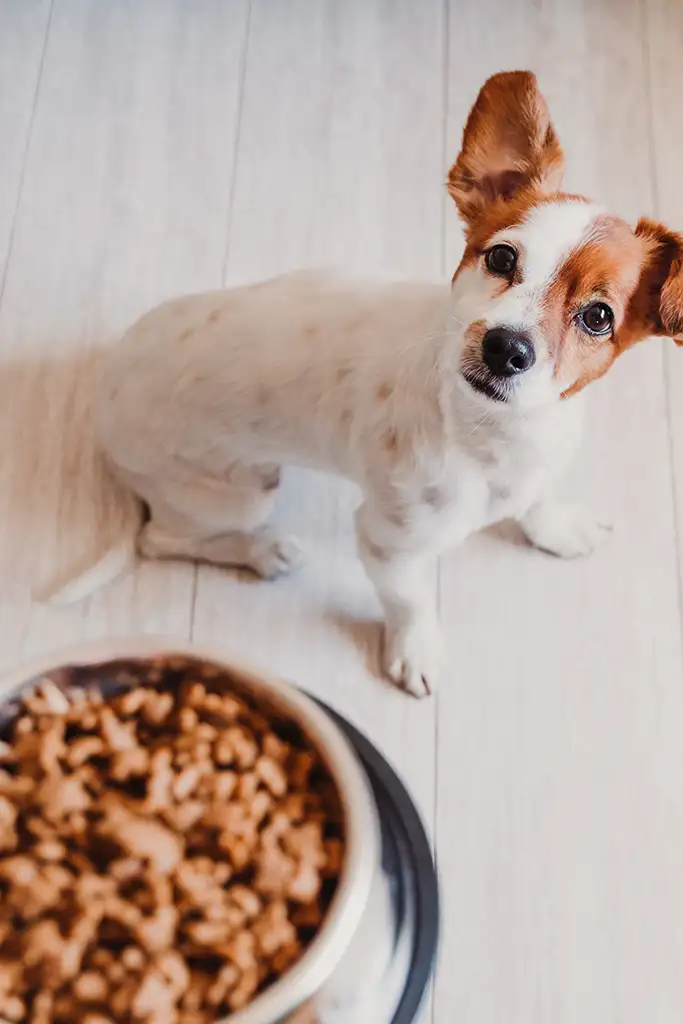Akita vs Shiba Inu – Comparing These Japanese Dog Breeds
Quick Guide
Shiba Inu vs Akita Dog Breed Comparison
Are you considering the Akita or Shiba Inu breed for your next pet, but want to know which is better for your lifestyle? If so, you have come to the right place!
Below you will find our side by side comparison of the Shiba vs Akita along with a brief description of their key similarities and differences.
After our Akita and Shiba comparison, be sure to read on to learn more about the history, temperament, and breed characteristics of each breed. This will give you even more information to decide which one is right for you.
Finally, this article concludes with a helpful guide to see which one of these dogs will fit your lifestyle best.
Akita vs Shiba Inu : Differences and Similarities
Shiba Inu vs Akita : Similarities
- Loyal and Affectionate: If a loyal and steadfast companion is at the top of your list when it comes to your next dog, then both breeds will fit the bill. Neither dog will leave you wondering where their loyalties lie.
- Low Maintenance Grooming: Both breeds have a double coat which will require some extra grooming in the spring when the undercoat sheds. However, they are both known to be clean and will require few baths. On the other hand, both breeds tend to shed quite a bit so be prepared for that.
- Dog Aggression: These breeds share a tendency to be possessive, territorial, and dominant. They usually do best in a single dog household and it can be difficult to add another dog (or pet of any kind) to their pack once they are an adult.
- Prey Drive: Both breeds have a strong prey drive thanks to their common hunting heritage. As such, off leash play should always take place in a secured, fenced environment. Most will chase and kill cats and other smaller animals when they have the opportunity.
- Independent Streak: Both the Shiba Inu and Akita are known for being smart but often stubborn. Training them how to do something is never the problem; getting them to do something on command is a different story.
- Experienced Handling: Because both dogs have a tendency towards aggression and need strong leadership and early socialization, it is advisable that you have some dog training experience before owning either of these breeds.
- High Exercise Needs: Both the Shiba Inu and the Akita need a fair bit of exercise and mental stimulation to stay out of trouble. Luckily, the Shiba is small enough to exercise indoors with a vigorous game of fetch daily. However, if you have an Akita, a securely fenced yard for plenty of outdoor play on a regular basis is recommended.
Akita vs Shiba Inu : Differences
- Size Comparison: Akitas are about twice the size of their pocket sized cousins, the Shiba Inu. This makes the Shiba a better choice for those who live in apartments or like to travel frequently. In addition, it is considerably less expensive to feed the smaller Shiba.
- Agility: Although both dogs are agile and athletic, the Shiba is a bit quicker on her feet thanks to her smaller stature. While a typical chain link fence is usually enough to secure an Akita, the Shiba can usually jump well over 4’, requiring a more sturdy and higher fence for safe containment when left unsupervised.
Akita : Complete Breed Profile
History:
The Akita has its ancestral roots among the ancient dogs of Japan originally bred to help their human companions hunt bear and deer. The Akita Prefecture is found in the northern region of the main island of Japan, Honshu. This region experiences cold winters, particularly in the inland mountainous regions, accounting for the thick double coat found in this breed.
Over the course of the last few hundred years, the original spitz like ancestors were bred with larger dogs to add both strength and size. Among them were likely St. Bernards, English Mastiffs, and Great Danes among others.
During the second world war, the Japanese government ordered the euthanization of all dogs that were not related to the war effort. During that time the Akita breed was interbred with German Shepherd dogs in an attempt to save this noble breed.
The first two Akitas to come to the United States were imported by Helen Keller who had met these dogs on a trip to Japan in 1937. By 1939, a breed standard was developed in the States. The American line of Akitas has slowly become slightly larger and more powerful than their Japanese counterparts. For more info on the American Akita check out our article here.
Temperament:
The Akita is well known as a territorial and protective breed who develops an extremely strong bond with a single person and to a slightly lesser extent, other members of his perceived “pack.” It is a breed that will often be wary and aloof with strangers. However, when spending time with his family, the Akita can have a surprisingly playful spirit.
Introducing a new dog or pet to a household with an Akita is dicey business they have a strong prey drive and are extremely territorial in many cases.
Generally, Akitas are well known to be tender and patient with children in their family. However, due to their extreme power, these dogs should never be allowed to be unsupervised around children. They can be extremely protective and may attack any perceived threat to those they consider their family.
Akitas require owners that are experienced with dogs, can provide strong leadership, and have the time to invest in training and socializing their Akita from puppyhood onward. Without consistent handling, the Akita can become overly dominant and aggressive with both people and other dogs.
Size:
Akitas are large and powerful dogs. They have dense bones and muscles, giving them a stout and intimidating appearance. Males average 26-28 inches at the shoulders and weigh in at 100-130 pounds. Meanwhile, females are significantly smaller, 24-26 inches and 70-100 pounds.
The American and Japanese standards for this breed are slightly different, with the Japanese preferring a slightly lighter weight build.
Coat and Appearance:
Akitas are a double coated breed with a thick downy undercoat which forms in the winter months and sheds when the weather turns warm in the spring. As such, they are not well suited for hot, southern climates. On the other hand, cold and inclement weather won’t pose a problem for this hearty breed.
The Akita has a fluffy outer coat, broad face, pointed ears, and a curled tail thanks to its spitz lineage. The coat can come in almost any color, including black, brown, silver, red, fawn, and white. Markings such as pinto, different mask configurations, and brindle are not uncommon.
Fun Fact: There is a rare long coat variety of pure bred Akitas known as “Moku.” This slightly longer and softer coated version is thought by many to have a more gentle temperament, although the appearance of this recessive trait is considered a fault in the show ring.
Health and Life Expectancy:
As a large breed dog, Akitas have a relatively short lifespan of 10-13 years. This breed seems to be genetically susceptible to a wide range of autoimmune diseases such as hemolytic anemia (a blood disorder) and Sebaceous adenitis (an immune disorder of the skin).
Congenital eye problems are also somewhat common in this breed. Microphthalmia, a congenital disease that causes severe eye degeneration, and progressive retinal atrophy are two examples.
It is critical that you review the health records of the parents, grandparents, and siblings of your Akita before buying. Responsible breeders will be happy to share the steps they have taken to preserve the health of this noble breed.
Want to learn more about Akita mix breeds? Check out our guides:
Shiba Inu : Complete Breed Profile
History:
Like the Akita, the Shiba Inu has its roots in the ancient spitz breeds of the region. In this case, the Shibu is the smallest of the native Japanese breeds.
Prized for its agility in rugged mountainous terrain of the Chubu region, the Shibu Inu was shown in a large scale genetic study to be one of the 13 “basal” dog breeds. This means it has ancient ancestry and represents one of the primary splits that makes up the complete genetic diversity of domestic dogs today.
Unlike the Akita Inu, the Shiba Inu was a small game hunter used to flush rabbits and birds for her human companions during the hunt.
The first Shiba that came to the United States was when a GI brought back one of the dogs in 1954. However, it wasn’t until 1979 that the first Shiba was bred in the U.S. The AKC formally set the breed standard in 1992. It currently holds the 44th place in the AKC registry of the most popular breeds. It is the most popular companion dog in Japan.
Temperament:
Shibas are an intelligent breed, but often their strong willed and independent nature can make them difficult to train. Consistency, patience, and positive reinforcement based training methods are required. One of the positives of this breed, however, is that they are very easy to housetrain, likely because of their fastidious nature.
Their personality is bold, alert, and good natured. Although they can be wary with strangers, they tend to fare better than the over protective Akita when it comes to getting used to other people and pets. However, they do have a strong prey drive, particularly for small animals. Unless raised around cats, it could be hard to introduce them to your home if you have an adult Shibu in your household.
These dogs tend to be adaptable and usually do well when it comes to apartment living. And, their independent nature means that they can usually tolerate being left alone for those with busy schedules. However, they still need plenty of exercise and mental stimulation to keep balanced and happy.
Although not a particularly barky breed, Shibas do have a very distinct, high pitched scream that they may use when feeling upset or over joyed. Overall, however, like the Akita, this is a relatively quiet breed making for a good neighbor.
Size:
About half the size of the Akita, a Shiba Inu weighs in at about 23 pounds for males and just 17 pounds for females and a height of about 15 inches, with males slightly larger than females.
Coat and Appearance:
The color range for Shibas are much narrower than their Akita cousins. Red or black and tan are the most common. Their small stature and playful antics give them a foxlike appearance. However, they do have a double coat and thrive in climates with cold winters.
One of the hallmarks of the breed is a tendency to be fastidiously clean, with an almost cat-like habit of licking its paws and legs. Grooming is low maintenance, although extra brushing is required in the spring when the undercoat sheds.
Health and Life Expectancy:
As is the case with many of the smaller dogs, this breed has a long life expectancy. The average is 13-16 years. It also has fewer congenital health problems than the Akita, although problems with the eye are common to both breeds.
Akita Inu : The Akita Shiba Inu Mixed Breed
Because both of these breeds share many characteristics in terms of temperament and appearance, mixes of the two breeds tend to be fairly stable. The personality of an Akita Inu mix is likely to be independent, loyal, possessive, territorial, and potentially aggressive with small animals, other dogs, and strangers.
The size is the main unknown quantity with this hybrid. Expect a medium sized dog weighing in between 30 and 60 pounds.
Which is Better for You? Shiba Inu or Akita?
The Shiba Inu may be the best breed for you if:
- You live in an apartment but can make sure your Shiba gets lots of exercise.
- You are looking for a protective but adventurous travel companion.
- You would like a quiet dog that is a big dog in a little package.
- You have experience with dog ownership and basic training and can provide firm, consistent leadership.
- You appreciate a clean dog with few grooming requirements.
The Akita may be the best breed for you if:
- You are looking for a protective guard dog to keep your family safe.
- You appreciate a one dog household and do not plan to add cats, dogs, or other pets for the life of your Akita.
- Fierce loyalty is your number one reason to get a dog, and you don’t mind that you may not be able to take your dog to places where other people and dogs will be (such as the dog park).
- You have advanced experience with dogs and can provide firm, consistent leadership along with positive reinforcement based training to teach basic manners.
- You have a large, securely fenced yard for plenty of outdoor play.
Neither Breed is a good fit for you if:
- You prefer a multi-dog household or want to have other small animals in your household, such as cats, ferrets, or birds.
- You don’t have much experience with dogs.
- You are not sure how to train a dog.
- You are not able to provide enough exercise for a dog with high exercise needs.
- You live in a hot and humid climate where both of these double coated breeds would be uncomfortable.
We hope this guide has given you the information you need to decide between the Akita vs Shiba for your next canine companion. Please feel free to leave a comment below if you would like to share your experience with either of these hearty Japanese dog breeds to help our readers decide which is better for them.











